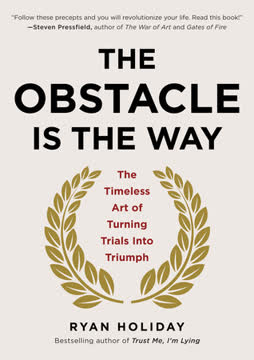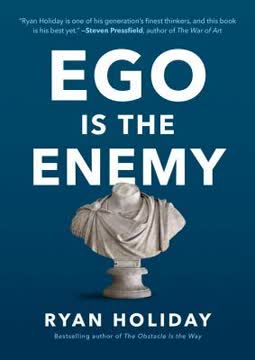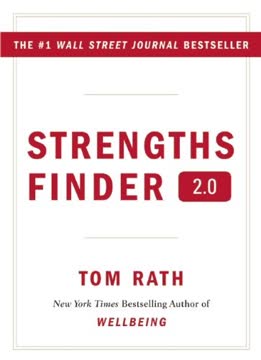Key Takeaways
1. Make a Big Bet: Start Right Where You Are
“I got my start by giving myself a start.”
Begin with what you have. Transformational breakthroughs often start small, with individuals leveraging their current skills, resources, and frustrations to create solutions. Barbara Van Dahlen, a counselor, started "Give an Hour" by asking colleagues to donate just one hour of therapy per week to military families, growing it into a national network providing millions in free services. Madam C.J. Walker, a washerwoman, created a hair product to solve her own problem, then built an empire empowering thousands of black women entrepreneurs.
Simple origins, big impact. Many world-changing ideas began with surprising simplicity. Airbnb founders, struggling with rent, rented air mattresses in their apartment during a conference, leading to a multi-billion dollar global platform. College students Rachel Sumekh and Bryan Pezeshki started "Swipe Out Hunger" by collecting leftover dining hall food, eventually influencing legislation to combat student food insecurity.
Chunk down the impossible. Big Bets can feel overwhelming, but they become achievable by breaking them into small, manageable steps. Like focusing only on the next three feet when running uphill, consistent small actions build momentum towards a large goal. Starting right where you are is the great equalizer, proving that lack of experience or resources doesn't have to be a barrier to making a difference.
2. Be Audacious: Dare to Dream Big
“We choose to go to the moon in this decade.”
Set audacious goals. Truly history-making transformations require revolutionary change, not just incremental advances. President Kennedy's "moonshot" in 1961 was audacious, committing to a feat for which the technology didn't yet exist, but it spurred innovation across numerous fields, from computing to materials science. Audacious goals inspire and unify people around a compelling vision.
Challenge the status quo. Audacity means being bold enough to pursue ideas that seem impossible or defy conventional wisdom. Google X (now X) operates as a "moonshot factory," tackling mammoth problems with radical solutions, like balloon-powered internet (Project Loon). Elon Musk's SpaceX aims to send humans to Mars by 2030, redefining travel on Earth and in space through audacious goals.
Young people lead the way. Audacity is not limited by age or experience. The Parkland students' #NeverAgain movement audaciously took on the NRA, demanding policy changes and influencing legislation. Fourteen-year-old Jordyn Schara, rejected by her town, audaciously applied for and won a state grant to start a drug collection program, preventing millions of pounds of drugs from harming youth.
3. Burst Through Assumptions and Bias
“The most effective way to do it is to do it.”
Challenge limiting beliefs. Making a Big Bet often requires rejecting assumptions about what is possible, both for ideas and for people. Eunice Kennedy Shriver burst through assumptions about intellectual disabilities by creating the Special Olympics, empowering millions of athletes like Loretta Claiborne, who defied expectations to become a world-class runner and speaker.
Innovation from unexpected places. Breakthroughs can come from those outside the traditional mold, unburdened by preconceived notions. Sara Blakely, selling fax machines, invented Spanx by cutting the feet off pantyhose, proving that lack of industry experience can be a strength. David Gilboa and Neil Blumenthal disrupted the eyeglass industry by selling glasses online, challenging the assumption that people wouldn't buy eyewear without trying it on in person.
Fight for justice and equality. Bursting through assumptions is crucial for social change. Bryan Stevenson challenges assumptions about incarcerated individuals, fighting mass incarceration and winning Supreme Court cases for children prosecuted as adults. His work highlights how bias and prejudice limit potential and perpetuate injustice, urging society to see individuals beyond their worst actions.
4. Embrace Risk as Necessary R&D
“You never fail until you stop trying.”
Reframe risk as research. Instead of fearing risk, view it as essential research and development (R&D) necessary for innovation and progress. Traditional organizations often avoid risk, but allocating even a small percentage of resources to experimentation can lead to breakthroughs. Steve Jobs noted that innovation isn't about R&D dollars, but about people, leadership, and understanding the need.
Experiment early and often. Science and medicine provide models for embracing experimentation. Dr. Edward Jenner risked injecting cowpox to test a smallpox vaccine, leading to global eradication. Jane Goodall, without formal training, used unconventional methods to study chimpanzees, making groundbreaking discoveries that redefined our understanding of tool use and human origins.
Test and iterate quickly. Modern technology allows for rapid testing and validation of ideas with limited resources. Eric Ries's "minimum viable product" (MVP) approach encourages launching workable products quickly to gather feedback and iterate, as seen with Zappos testing online shoe sales by taking photos in stores. Embracing risk as R&D means constantly trying new things and adapting based on what is learned.
5. Pick Up Where Others Left Off
“Big ideas coalesce out of smaller, incremental breakthroughs.”
Build on existing foundations. Innovation is rarely a solitary "aha!" moment; it often involves taking nascent ideas, learning from previous attempts (both successes and failures), and adding new insights. Thomas Edison, often credited with the lightbulb, was a master "sponge," borrowing from earlier patents and creating a system for invention by bundling existing ideas with new approaches.
Iterate and improve. Early online services like The Source and GEnie had powerful ideas but were limited by technology and cost. AOL succeeded by picking up where they left off, improving the user experience, pricing, and interface, ultimately ushering in the internet revolution for the masses. Facebook, Twitter, and Google, in turn, built upon AOL's innovations in community and content.
Catalyze movements. Learning from pioneers can spark new movements. Jessica Jackley was inspired by Muhammad Yunus's micro-lending work and adapted it to create Kiva, a crowdfunding platform for small loans globally, empowering entrepreneurs in developing countries. Steve Case's "Rise of the Rest" initiative builds on the idea of democratizing access, spotlighting and funding entrepreneurs in overlooked heartland cities, recognizing that innovation happens everywhere.
6. Make Failure Matter: Learn and Persevere
“Fall down seven times; get up eight.”
Failure is part of the journey. Extraordinary achievements almost always involve failure along the way. Instead of hiding mistakes, fearless individuals and organizations acknowledge them, learn from them, and share those lessons. The Case Foundation's PlayPumps initiative, despite significant investment and fanfare, failed to meet its goals, but transparency about the failure led to shared learning and new approaches in the sector.
Embrace failure as a tool. Some organizations actively pursue failure as a necessary part of discovery. Astro Teller's X lab rewards teams for killing projects based on evidence, viewing "enthusiastic skepticism" as the partner of optimism. Thomas J. Watson Sr. of IBM famously said, "If you want to succeed, double your failure rate," seeing mistakes as investments in education.
Perseverance through setbacks. Failure is painful, but it doesn't have to be final. Oprah Winfrey turned being fired from a news anchor job into a successful talk show career. Steven Spielberg, rejected from film school, became one of the most successful directors ever. Steve Jobs, ousted from Apple, went on to found Pixar and return to lead Apple to new heights. These giants demonstrate that recovery and learning are key.
7. Beat the Odds by Defying Expectations
“I had nothing to lose, and sometimes that makes you brave enough to try.”
Disenfranchisement as a force. Those who are underestimated or feel like outsiders often possess a powerful drive to prove themselves and defy expectations. J.K. Rowling, a single mother on welfare facing numerous rejections, found bravery in having nothing to lose, leading to the global phenomenon of the Harry Potter series.
Overcoming immense hardship. Individuals from challenging backgrounds frequently beat the odds through sheer perseverance and hope. Salva Dut, one of the Lost Boys of Sudan, survived civil war and refugee camps, eventually founding Water for South Sudan to bring clean water to his homeland. Darren Walker, a gay black man from the South, overcame poverty and bias to become president of the Ford Foundation, inspiring others to speak out and make a difference.
Finding purpose in service. Many who beat the odds turn their experiences into a mission to help others. Team Rubicon, founded by veterans after the Haiti earthquake, provides disaster relief while giving veterans a renewed sense of purpose and community, addressing issues like suicide and homelessness. These stories highlight how personal struggle can fuel a fearless commitment to improving the lives of others.
8. Reach Beyond Your Bubble: Seek Diverse Perspectives
“The ability to work with and understand people who are not like you is part of the secret sauce of success.”
Challenge your blind spots. Everyone has biases, and staying within familiar circles limits understanding and potential solutions. Traveling to unfamiliar places and engaging with people from different backgrounds, like exploring America's heartland, helps reduce blind spots and fosters respect for diverse perspectives often overlooked by coastal elites.
Diversity drives innovation and performance. Research consistently shows that diverse teams and inclusive cultures lead to better financial performance and increased innovation. Companies with greater gender, racial, and ethnic diversity are significantly more likely to outperform their less diverse counterparts. This isn't just a social good; it's a strategic advantage.
Address systemic bias. Despite the evidence, venture capital funding remains heavily skewed towards white men, leaving women, people of color, and entrepreneurs outside major hubs underserved. Leaders like Mellody Hobson advocate for being "color-brave" and intentional about inclusion in investment and leadership, recognizing that unconscious bias stifles the next wave of innovators from diverse backgrounds.
9. Build Unlikely Partnerships for Greater Impact
“If you want to go fast, go alone. If you want to go far, go together.”
Collaboration amplifies reach. Great achievements are rarely the work of a lone genius; they are often the result of collaborations between diverse individuals and organizations. The National Geographic Society partnered with 21st Century Fox to expand its global reach, demonstrating how a nonprofit and a media company can leverage each other's strengths while maintaining their core missions.
Unexpected allies create magic. Forming partnerships with seemingly incongruous entities can lead to powerful outcomes. NASA and LEGO collaborated to inspire youth in STEM through space-themed kits and experiments on the International Space Station. Impact investing brings together investors seeking both financial and social returns, fueling companies like Warby Parker and Happy Family that integrate profit and purpose.
Bridge divides for the greater good. Unlikely partnerships can overcome significant challenges and political divides. The design challenge for a better Ebola hazmat suit brought together public health experts and a wedding dress seamstress, leading to a life-saving innovation. President George W. Bush enlisted former presidents George H.W. Bush and Bill Clinton, rivals from different parties, to lead fundraising efforts after natural disasters, demonstrating the power of unity in crisis.
10. Let Urgency Conquer Fear: Seize the Moment
“I learned that courage was not the absence of fear, but the triumph over it.”
Crisis demands action. Urgency, whether self-imposed or thrust upon you, can provide clarity and boldness. In moments of crisis, individuals and organizations often find the courage to act decisively, as seen when Johnson & Johnson CEO James Burke immediately pulled Tylenol off shelves after poisonings, prioritizing safety over profit and ultimately rebuilding trust.
Turn setbacks into opportunities. Crises can force necessary pivots and unleash new energy. When Apple canceled their deal, the AOL founders faced an existential crisis but seized the moment to launch their own service, coalescing around the mission to "get America online" with limited resources. This urgency fueled their early success.
Be a first responder. Fearless individuals step up to fill voids in times of need, even when it's not their official role. Walmart CEO H. Lee Scott Jr. empowered local managers to act as first responders after Hurricane Katrina, providing essential supplies when official aid faltered. Chef José Andrés mobilized chefs and volunteers to provide millions of meals after disasters like Hurricane Maria in Puerto Rico, viewing food as an agent for change.
11. Don't Overthink or Overanalyze. Do.
“When you act with courage, your brain is not involved. Your heart speaks first, and you listen.”
Action overcomes paralysis. Excessive analysis and overthinking can lead to hesitation and inaction. While careful consideration is important, there comes a point where you must decide and act, letting urgency guide you past fear and procrastination. The "5 Second Rule" suggests a simple countdown can trigger action before doubt sets in.
Decisive action in crisis. In critical moments, the risk of doing nothing often outweighs the risk of acting quickly, even with incomplete information. President Obama's administration made a swift, bold decision to bail out GM and Chrysler during the 2008 financial crisis, a move that revitalized the auto industry despite political unpopularity.
Purpose fuels action. A strong sense of purpose can drive individuals to act with urgency over decades, even when facing immense challenges. Bertha and Harry Holt, moved by the plight of Korean orphans, lobbied Congress to change adoption laws and founded an agency and facility, demonstrating "Love in Action" over a lifetime. Marta Gabre-Tsadick, exiled from Ethiopia, founded Project Mercy to provide holistic aid, driven by a moral urgency to fight poverty.
Last updated:
Review Summary
Be Fearless receives mixed reviews, with ratings ranging from 1 to 5 stars. Positive reviews praise its inspirational stories and motivational message, while critical reviews find it lacking in practical advice and substance. Some readers appreciate the author's storytelling and examples of successful risk-takers, while others feel the book is cliché and repetitive. The book's five principles for becoming fearless are frequently mentioned, but opinions differ on their effectiveness and applicability. Overall, the book seems to resonate more with readers seeking general inspiration rather than specific guidance.
Similar Books









Download PDF
Download EPUB
.epub digital book format is ideal for reading ebooks on phones, tablets, and e-readers.




